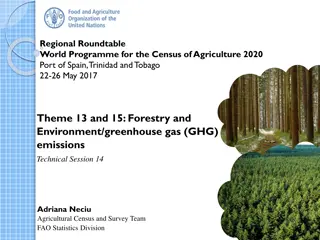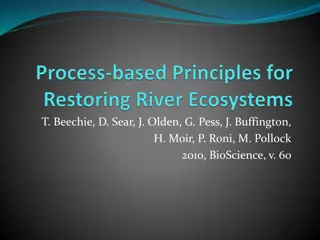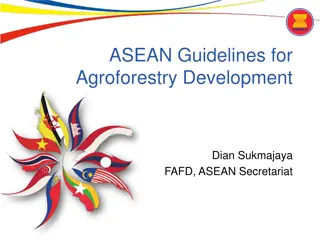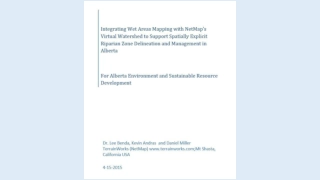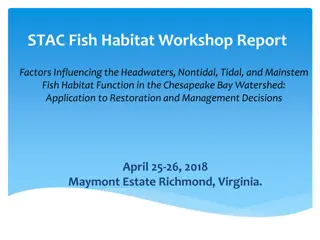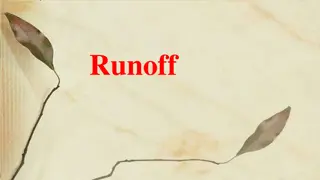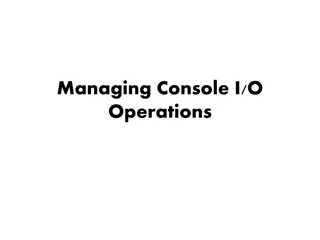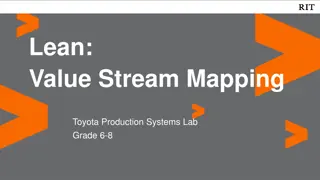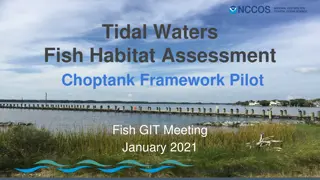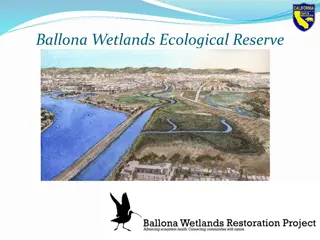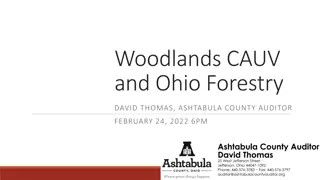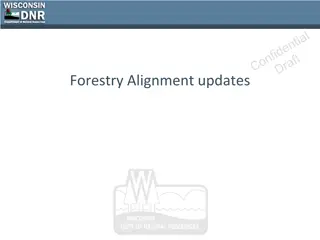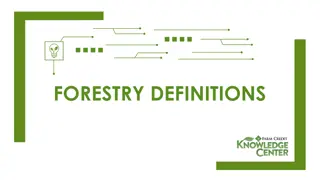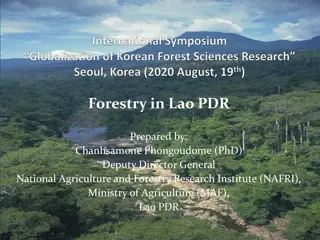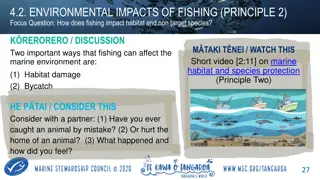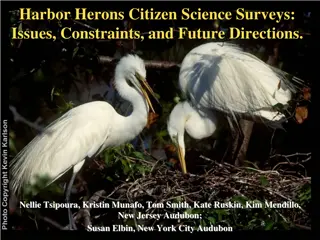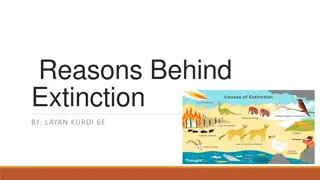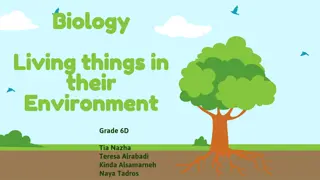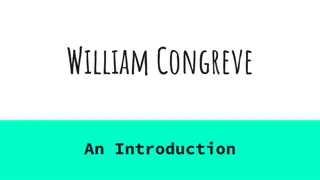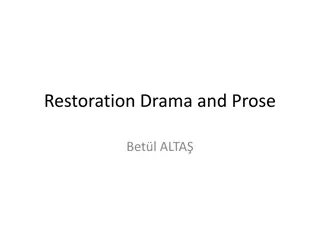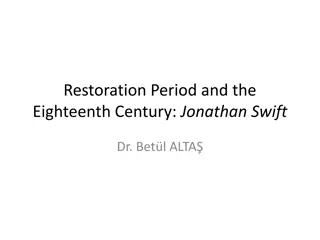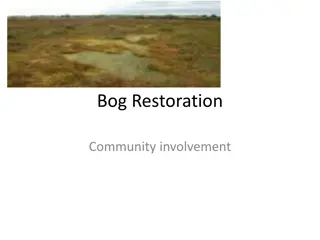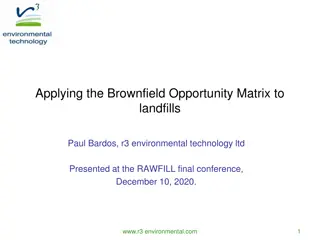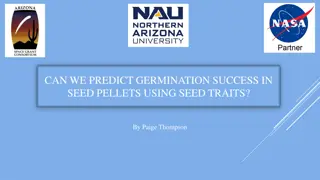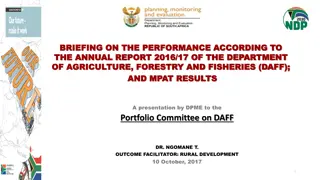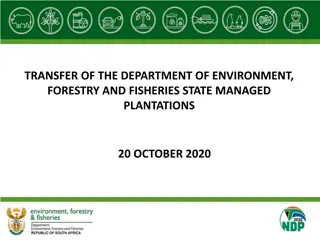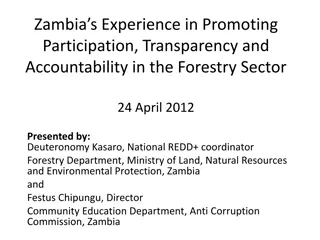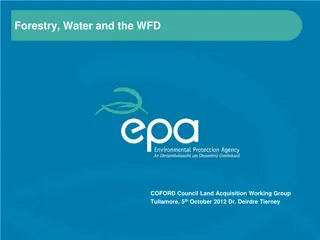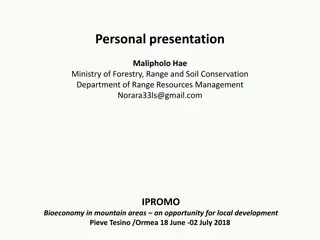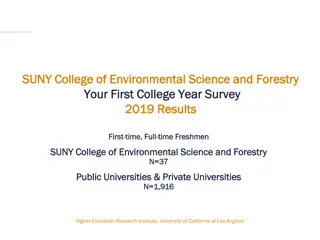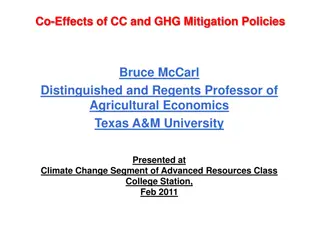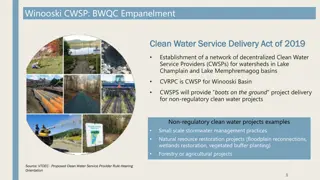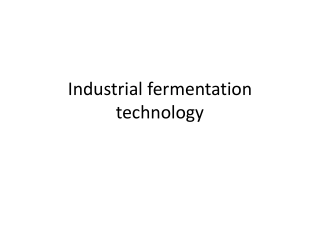Washington Department of Forestry Stream Habitat Restoration Guidelines
The guidelines outline restoration efforts including fish passage, spawning gravel cleaning, and placement of instream sediment detention basins. The document lists various anadromous and freshwater fish species found in Washington, highlighting the importance of unimpeded fish passage for their migration. It also discusses the risks and uncertainties involved in restoration projects, emphasizing the need for proper maintenance to prevent potential failures.
Download Presentation

Please find below an Image/Link to download the presentation.
The content on the website is provided AS IS for your information and personal use only. It may not be sold, licensed, or shared on other websites without obtaining consent from the author. Download presentation by click this link. If you encounter any issues during the download, it is possible that the publisher has removed the file from their server.
E N D
Presentation Transcript
Washington Department of Forestry, Stream Habitat Restoration Guidelines, 2004 Ryan Johnson
Overview Fish passage restoration Spawning gravel cleaning and placement Instream Sediment Detention Basins
Washington Fish Species Anadromous o Steelhead o Coho, Chinook, Pink, Chum, and Sockeye Salmon o Cutthroat Trout o Pacific and River Lamprey o Green and White Sturgeon o American Shad o Dolly Varden/Bull Trout o Longfin Smelt o Eulachon
Washington Fish Species Freshwater o Juveille Coho, Chinook, and Steelhead o Kokanee o Rainbow and Cutthroat Trout o Brown and Brook Trout o Bull Trout/Dolly Varden o Olympic Mudminnow o Stickleback o Sculpin o Pygmy and Mountain Whitefish o Cyprinids o Catostomids o Sturgeon o Western Brook Lamprey
Fish Passage All listed fish require unimpeded access up and downstream oSafe, effective passage between reproduction, feeding, and refuge habitats Passage timing, frequency, and duration varies with each species Passage not limited to mainstream oLateral movement
Blockage of Passage 2,256 road crossings of fish bearing streams o1,036 identified as barriers oPotential for >33,000 salmonid blockages Coincides with blockage of downstream transport of habitat elements oSediment, water, wood
Fish Passage Restoration Potential for greatest return on value oAs simple as retrofitting a culvert Can restore fish population, and habitats downstream Best used in vertically and laterally stable streams oPassage structures can become buried
Risk & Uncertainty Risk to resident fish o Can create competition with established species o Can introduce species historically not ever present Structures can fill with sediment o If not maintained, possible catastrophic failure of road fill With relevant data and proper analysis, uncertainty is minimal
Spawning Gravel Cleaning and Placement
Salmonid Spawning Habitat Controlling factors oSize, permeability, and compaction of substrate oVelocity, depth, direction, and dissolved oxygen content of flow oProximity to cover and rearing habitat
Excessive Fine Sediment Buries spawning gravel Reduces availability of dissolved oxygen to eggs Reduces removal rate of metabolic wastes from the redd Displaces aquatic invertebrates from gravel pore spaces oPrimary source of food for juvenile salmonids
Gravel Cleaning Mechanized removal of fine material oOccasionally hydraulic removal Temporary if source of fines not tended to Should only be used where excessive fines are the limiting factor for salmonids
Gravel Placement Spawning gravel added to replace identified loss of gravel Construction of discrete spawning pads o Typically created by channel constriction or streambed control structures Must be careful with placement o High flows can wash away eggs Appropriate if stream s capacity to retain gravel is restored May be used in fines-dominated stream if there is no continuing source of fines
Sediment Size Optimal sediment size for most salmonid species o80% of 10-50 mm gravel o20% up to 100 mm gravel oTrace coarse sand (2-5 mm) No angular or crushed gravel
Risk & Uncertainty Relatively low risk for both methods oTemporary destabilization of habitat oTargeting benefits toward one species may hurt other species oPlacing gravel may cause aggradation in unwanted places Significant uncertainty oStream-specific and species-specific oObservation and evaluation important
Data and Assessment Must understand requirements of involved species and habitat Gravel cleaning questions (lots of fines): o Single event or chronic source of sediment? o Fines increased by land use? o If yes, watershed and riparian restoration viable? Gravel placement questions (no gravel): o Gravel recruitment problem? o Limits by transport conditions? o Anthropogenic or natural? o If natural, should the habitat be altered? o If human, can the source be addressed?
Variation Variation in redd creation from different species o Substrate size, water depth, and water velocity
Cost Can be costly and vary from project to project, depending on specific needs
Maintenance Gravel cleaning should require no maintenance Gravel placement should be monitored regularly oGravel moves slowly downstream oPeriodic replenishment
Instream Sediment Detention Basins
Gravel Traps Pools built to capture and store sediment for removal Useful for curbing excessive aggradation in a pinch oTreats only the symptom, not the source Should only be used after developing a full understanding of sediment source(s) and patterns of deposition oMust allow appropriate types of sediment to continue
Considerations Building structures of this nature disrupt the habitat on a local scale Causes discontinuity in sediment and debris flows Can interfere with organism survival requirements All-in-all, very invasive
Goal Short-term solution for removal of excess sediment Used before long-term measures can be implemented or before they become effective Most effective for gravels, cobbles, and boulders
Risks & Uncertainty Impedance of fish passage up and downstream May strand fish during low or no-flow periods Cleanout requires fish relocation o High stress, injury, or death If unmonitored, lateral channel migration can occur Can increase flood levels High natural variability causes high uncertainty in efficacy of trap and size of particle trapped
Planning Make sure there is no alternative Is mitigation necessary? Is the obligation worth it? Starvation of downstream spawning habitats of gravel? Downstream incision or scour? How often will inspection, maintenance, and cleanout be necessary? Where will the sediment be dumped? How will the trap be decommissioned?
Location Should be placed at a natural grade break or constriction oLow velocity oIncrease natural tendency for sediment to accumulate
Construction Two major components oExcavation of the basin oConstruction of the flow control structures Off-site assembly reduces time stream is impacted
Flow Control Structures Weirs oControlled by shape, elevation, and length of weir crest oFlow passes over weir crest Slots oConfigured in vertical orientation oFlow passes through slot Flashboard risers and gates oAllows isolation of active working area
Sediment Removal Basin design should include bypass ditch or pipe oDiverts stream flow while removal occurs
Cost and Maintenance Includes excavation and hauling, and construction of structures, including oFlow control devices and bypass channels Maintenance costs for sediment removal Frequent monitoring important oSediment removal can be initiated near operating capacity oShould be checked after each flood
Decommissioning Short-term project Should be as simple as removing the flow control devices
Summary Fish passage restoration o Simple and cost-effective o Must consider needs of different species Gravel cleaning o Removal of fines, which can negatively impact salmon spawning Gravel placement o Creation of spawning pads where gravel deposition is minimal Gravel traps o Short-term solution to excessive sediment transportation



